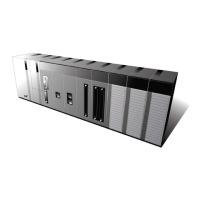Appendix
A-3
A.2 Terminology
A.2 explains it for the general term of the FEnet I/F module. If you want more detailed contents,
Please perform reference of an Ethernet specialized book.
1. IEEE 802.3
IEEE 802.3 specifies standards for CSMA/CD based Ethernet. Exactly it is a LAN based on
CSMA/CD (Carrier Sense Multiple Access with Collision Detection) Ethernet designed by IEEE
802.3 group, which is classified into detailed projects as specified below;
A) IEEE P802.3 - 10G Base T study Group
B) IEEE P802.3ah - Ethernet in the First Mile Task Force
C) IEEE P802.3ak - 10G Base-CX4 Task Force
※ Ethernet and IEEE 802.3 are standardized at RFC894 and RFC1042 so each should process
another frame.
2. ARP (Address Resolution Protocol)
Protocol to search for MAC address by means of correspondent IP address on the Ethernet LAN
3. Bridge
A device used to connect two networks so to be operated as one network. Bridge is used not
only to connect two different types of networks but also to divide one big network into two small
networks in order to increase the performance
4. Client
A user of the network service, or a computer or program (mainly the one requesting services)
using other computer’s resource.
5. CSMA/CD(Carrier Sense Multiple Access with Collision Detection)
Each client checks if there is any sign prior to transmission of data to the network (Carrier
Sense) and then sends its data when the network is empty. At this time, all the clients have the
equal right to send (Multiple Access). If two or more clients send data, collision may occur. The
client who detects the collision tries to send again in a specific time.
6. DNS (Domain Name System)
A method used to convert alphabetic Domain Name on the Internet to its identical Internet
number (namely, IP address)
7. Dot Address
Shows IP address of ‘100.100.100.100’, where each figure is displayed in decimal with 1 byte
occupied respectively for 4 bytes in total.

